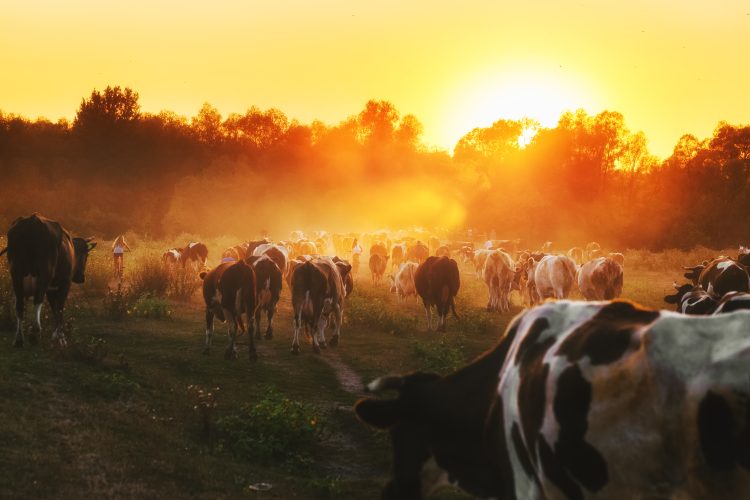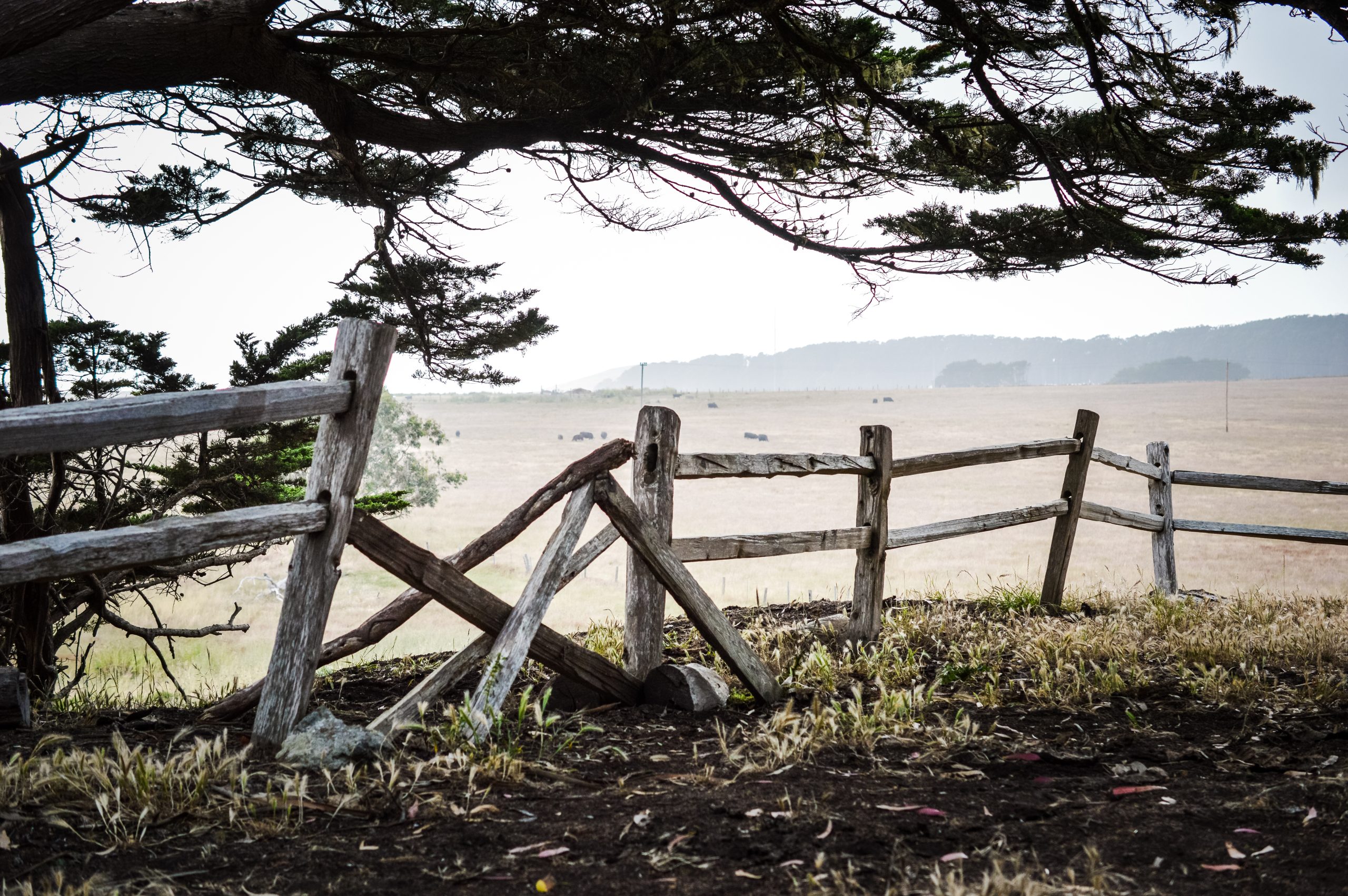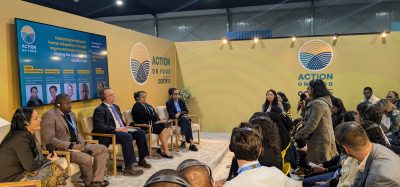An invisible solution to livestock fencing challenges
- Like
- Digg
- Del
- Tumblr
- VKontakte
- Buffer
- Love This
- Odnoklassniki
- Meneame
- Blogger
- Amazon
- Yahoo Mail
- Gmail
- AOL
- Newsvine
- HackerNews
- Evernote
- MySpace
- Mail.ru
- Viadeo
- Line
- Comments
- Yummly
- SMS
- Viber
- Telegram
- Subscribe
- Skype
- Facebook Messenger
- Kakao
- LiveJournal
- Yammer
- Edgar
- Fintel
- Mix
- Instapaper
- Copy Link
Posted: 26 October 2023 | John Smout | No comments yet
John Smout reveals how Nofence’s virtual fencing technology empowers farmers with GPS collars, improving livestock management, soil health, and animal welfare.


First founded in 2011 by Norwegian goat farmer Oscar Hovde, Nofence was created to solve the challenge he faced in building physical fencing on mountainous land. The technology in Nofence’s collars uses GPS to install an invisible barrier, or ‘virtual fence’, which controls where livestock can graze without the need for a physical barrier.
Each animal wears a collar linked to the Nofence app on the farmer’s smartphone and each collar has an ID number. The farmer can allocate each animal to a pasture area. Once the animal has registered a GPS position within the pasture, the boundary is activated.
Whenever animals approach the virtual boundary, which is set up in the Nofence app, the collar emits an audio warning. This signals to the animal that they are approaching the boundary and they should turn around. During the training phase livestock quickly learn to understand the audio warning, which is also reinforced by herd behavior. As a consequence, a targeted and controlled electrical pulse is seldom emitted and only then as a very last resort.
Supporting the environment and animal welfare
Nofence’s virtual fencing technology has a variety of benefits for the environment and farmer welfare. We can aid improvements in soil health and biodiversity by allowing large herbivores access to grazing areas they may otherwise not have been able to graze. It helps to maintain and restore natural landscapes by eliminating the need for physical barriers. The technology also reduces the risk of contaminating water sources because the technology enables farmers to install virtual fencing in difficult terrain.
Nofence provides a tool to help farmers regenerate land and improve nutrient recycling, providing an efficient and flexible solution for land management. As an efficient means of land management it leads to better quality produce because it facilitates managed grazing. Managed grazing enhances soil health and promotes natural fauna. For example, virtual fencing allows livestock to graze pastures which are difficult to fence physically such as special conservation areas. As farm animals graze, they aerate the soil by trampling their hooves and bury organic matter into the ground creating the benefits across the ecological chain.
In addition, farmer welfare improves with the introduction of Nofence. Farmers can spend more quality time with their families and take holidays away from the farm. It offers peace of mind to farmers since they can use the Nofence app to monitor their livestock remotely. It is also more labour efficient as it eliminates the need to move physical fencing.
The revolution
Conventional, physical fencing is labour intensive and causes injury to livestock. On the other hand, virtual fencing is more environmentally-friendly because it gives the farmer full control over grazing management. Installing, moving and repairing physical fencing is a drain on a farmer’s time and energy.
The technology enables farmers to change grazing patterns at a swipe of their finger and the technology’s GPS-enabled collars, empowers farmers to address issues when and where required through real-time data feeds.
With a strong foot hold in Norway, since it was founded, Nofence has become very popular across Europe especially in the UK, Ireland and Spain. Nofence’s technology saves farmers time by cutting time monitoring, building and moving physical fences as well as cutting costs. James Waight in Wiltshire has been a customer for several years and remarked how Nofence has revolutionised his working life: “I used to spend hours a day moving fences. Now in a few seconds I have increased the boundary by 50 meters.”
What’s more, Nofence has boosted biodiversity and promoted woodland growth in the fifth century BC Little Doward hill fort in the Wye Valley under the management of the Woodland Trust. A herd of Dexter cows help support soil health, spread seeds and trim excessive vegetation. The virtual fencing means that the 82 hectares of woodland is being restored without the need for unsightly physical fences. Nofence allows the cattle to reach areas that would not be accessible in a conventional setting with a physical boundary.
Stepping away from traditional fencing methods
Nofence gives farmers the ability to remotely monitor cattle and manage grazing. On the app, farmers are able to define new grazing boundaries with a tap of their finger, removing the need for manual, in-pasture intervention. In a similar way, farmers can check on the location of their livestock.
Virtual fencing is safer and more resilient than conventional fencing. In times of heavy precipitation virtual fences can be swiftly and easily moved to avoid areas of flooding. Moreover, there is no risk of virtual fences being damaged by wind or interfered with by the public.


Fuller claims Nofence’s technology means there is “no risk of virtual fences being damaged by wind or interfered with by the public”
Virtual fencing helps to prevent escaped animals from being misplaced or injured. When an animal escapes from the pasture area the farmer will receive a push notification alerting them to the breach.
The collar will continue to track the animal’s location and send it to the farmer via the app. The collar reports its positions every 15 minutes, or alternatively the farmer can receive real time positions. Therefore, this mechanism allows animals to escape pasture areas from predators or loose dogs because they will not be trapped behind a physical fence if they are chased. Equally, the technology allows escaped animals to safely and quickly return to the herd as the virtual boundary is not active when the animal returns to the pasture.
Nofence collars are a long-term investment in a farm business. They can be used on a variety of livestock including cows, sheep and goats. There is an initial collar purchase cost and an ongoing usage subscription. It is beneficial for farmers to assess multiple factors including; reduced time and labour costs, the balance of additional grazing area and potential reduced feed input costs and a reduction in time spent finding animals in extensive systems. When balanced out with these factors as well as a comparison of physical fencing costs the benefits of Nofence can provide real economic benefit.
However, public support is needed to encourage the uptake of Nofence. Farmers must be incentivised to make the investment in their business and the environment. collars and apps will reduce the labour and resources required to monitor cattle and maintain fencing.
Nofence can make a positive impact in a wide range of farm systems. On upland farms, it allows farmers to graze inaccessible pastures without the need to erect physical fencing. In special conservation areas, it allows project managers to graze marginal pastures. On open plain systems, it allows farmers to easily alter grazing patterns without the effort of moving physical barriers.
Putting animal welfare first
Minimising animal discomfort is a leading priority for Nofence and we believe that virtual fencing has an overall positive impact on animal welfare. At the most basic level, virtual fences eliminate the risk of animals getting stuck in wires and becoming stressed and possibly injured.
The monitoring systems of virtual fencing helps to secure animal welfare, this is not possible with physical electric fencing. According to research by the Irish ministry of agriculture, the ability to know where an animal was at regular intervals throughout the day, added to the safety and welfare of the animals and allowed appropriate responses to be activated earlier than might otherwise have been the case. In a traditional setting, farmers don’t have the time to check on animals more than once a day, especially on larger farms, let alone find their exact location.
There are positive implications of virtual fencing for farm animals’ welfare and their herd behaviour. The learning of a virtual fence system is based on operant conditioning, where the animals must change their behaviour upon hearing the audio cue. Farm animals like sheep and cows are herd animals and follow the behaviour of other animals around them. This ultimately means that the animals can understand what the audio tune of the collars means by hearing it from other animals who trigger the tune.
Fencing of the future?
Virtual fencing has significant potential to revolutionise land management and livestock farming at large. Nofence is a trailblazer for more sustainable and environmentally friendly practices based on the development of new tools and systems. The technological advancements Nofence collars offer will contribute to a cost-efficient future for agriculture.
Nofence is continually analysing data gathered from its product to see what functions could be integrated into the product to improve grazing management, animal health and livestock performance. Building on its early success in Norway and Europe, Nofence plans to grow its customer base in its existing markets and expand its footprint in the Spanish and North American markets.
About the author:











